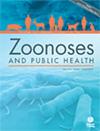Development of a Dynamic Stochastic Compartmental Model of Zoonotic Toxocariasis Transmission
Abstract
Introduction
Toxocariasis is a neglected zoonosis caused by ascarid nematodes of canids and felids. It is a global problem, affecting individuals in high, low, and middle-income countries. The burden of disease has previously been estimated at > 90,000 DALYs lost per year due to toxocariasis, and $2.5 billion annually in economic impact. Transmission of toxocariasis depends on interactions and contact between humans and the definitive animal hosts, mediated by environmental contamination with long-lived parasite eggs. This can complicate control measures, requiring the adoption of a One Health approach. Within this context, dynamic models of transmission can have an important role to play in improving our understanding of disease transmission and can serve as effective tools to aid in the development of control strategies.
Methods
In this study, we develop a modified dynamic compartmental model for the zoonotic transmission of toxocariasis from dogs and cats. We further incorporate stochasticity into the model to account for existing uncertainties related to the proportion of seroprevalent individuals who exhibit symptoms of the infection.
Results
We initially use the model to estimate region-specific transmission rates from dogs and cats to humans by iterative model fitting to existing estimates of seroprevalence across a selection of countries. We then examined the performance of the model in estimating the number of human exposures and symptomatic cases of toxocariasis and found a good level of concordance between the model predictions and estimates from previous work. Finally, we use the model to estimate the potential disease burden and economic impact across a range of countries, with the potential for more realistic estimates in countries that may have underestimates for seroprevalence.
Conclusions
We described the first zoonotic transmission model of toxocariasis, which can serve as a foundational tool for testing public veterinary health interventions to reduce the burden of toxocariasis. This model represents an important first step to improving One Health control for this disease.

 求助内容:
求助内容: 应助结果提醒方式:
应助结果提醒方式:


